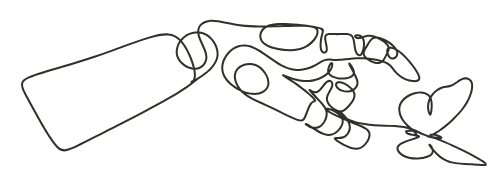Attention-Deficit/Hyperactivity Disorder (ADHD) is too frequently mistaken as a behavioral problem or poor discipline. But the truth according to studies is that ADHD is an intricate neurodevelopmental disorder that impacts the way the brain develops and works. Knowing the biological and neurological underpinnings of ADHD is important to parents, teachers, and caregivers — particularly in the decision making process on the most effective ADHD therapy or ADHD treatment regimen.
What Does “Neurodevelopmental” Mean?
ADHD is a neurodevelopmental disorder, which means it is something that develops during the course of developing the brain, especially early in life. This puts ADHD in a category with such things as autism spectrum disorder and learning disabilities. In ADHD, brain function and structure vary in regions associated with attention, control of impulses, executive functions, and regulation of emotions.
The most impacted brain areas are usually the prefrontal cortex, basal ganglia, and cerebellum — all of which play important roles in maintaining attention, planning, and regulating emotions. Research with brain imaging has indicated that some children with ADHD can have delayed maturation of the brain, especially in these important areas.
Core Symptoms and Brain Function
The main ADHD symptoms — inattention, hyperactivity, and impulsivity — have their roots in variability in how the brain handles information. For instance:
- Inattention might be caused by ineffective activity within the brain’s executive function network, so that focusing is difficult, remembering instructions is difficult, and planning tasks is difficult.
- Hyperactivity is associated with underactivity in regions responsible for movement regulation and self-control.
- Impulsivity occurs when the reward and decision-making centers of the brain respond too rapidly, without adequate inhibition.
The identification of these symptoms as being brain-based — not personality defects — changes how we treat ADHD and lessens stigma surrounding the disorder.
The Role of Dopamine
Dopamine, a neurotransmitter involved in motivation, reward, and attention, is generally dysregulated in people with ADHD. Numerous treatments for ADHD and medications act on the dopamine system to enhance concentration and control over behavior. This biological factor also lends support to the notion that ADHD is not merely behavioral — it is highly dependent on brain chemistry.
Diagnosing ADHD: A Developmental Perspective
Since ADHD is a neurodevelopmental condition, symptoms usually arise early in life — frequently before age 12. Nevertheless, ADHD is not always diagnosed immediately. Certain children, particularly girls, can exhibit symptoms in subtle ways (e.g., daydreaming or emotional sensitivity) and may not be given the accommodations they need initially.
Developmental history is central to a correct diagnosis. Clinicians tend to examine patterns of attention, level of activity, and behavior in more than one setting (home, school, social) over time in order to decide if ADHD treatment is warranted.
Why Understanding Neurodevelopment Is Important for ADHD Treatment
When you view ADHD as a neurodevelopmental disorder, it transforms the way you provide support. Rather than simply treating symptoms, ADHD therapy can work on establishing the underlying skills a child might be developmentally behind in learning.
The following are some examples of ADHD therapy aligned with this knowledge base:
1. Behavioral Therapy
Behavioural therapy is the most frequent non-drug treatment of ADHD. It teaches kids concrete skills to regulate attention, decrease impulsivity, and raise self-regulation — all associated with brain development. Parents are frequently involved in participating in these sessions to help “bake” strategies into home life.
2. Cognitive Behavioral Therapy (CBT)
CBT empowers older kids, adolescents, and adults with ADHD to recognize unhelpful thinking patterns, control stress, and form habits of organization. It is especially useful in treating co-occurring depression or anxiety, which occur frequently in individuals with ADHD.
3. Parent Training and Support
Since ADHD is a developmental disorder, parent-directed approaches can be very effective. Training assists parents in knowing their child’s individual needs, establishing clear expectations, and developing consistent routines supportive of executive function development.
4. Occupational Therapy
Other children with ADHD also experience motor coordination and sensory difficulties. Occupational therapy can enhance fine motor skills and assist children in handling sensory input more effectively, which can promote concentration and emotional regulation.
5. Medication
Medications such as stimulants and non-stimulants are commonly included in the treatment plan for ADHD. They regulate brain chemicals — specifically dopamine and norepinephrine — that enhance attention and curb impulsivity. Medication must always be combined with a treatment plan that incorporates behavioral techniques and ongoing monitoring by a healthcare professional.
Constructing a Comprehensive ADHD Treatment Plan
Since ADHD impacts each child differently, there is no single approach. The best ADHD treatment integrates several methods — behavioral, educational, medical, and emotional — that are customized to the child’s needs and stage of development.
A complete treatment program may include:
- Weekly or more frequent behavioral therapy sessions
- School accommodations
- Medication, if necessary
- Parent coaching and home strategies
- Emotional well-being and self-esteem support
Conclusion
ADHD is not merely a matter of “bad behavior” or a lack of discipline — it’s a neurodevelopmental disorder based on the way the brain develops and operates. Understanding the neurological underpinnings of ADHD can help parents and caregivers make more informed choices about ADHD therapy and ADHD treatment. Working with a child who has ADHD is all about long-term growth, not immediate fixes for problem behavior. With the proper blend of therapies, strategies, and insight, kids with ADHD can succeed — at home, in school, and in life.


